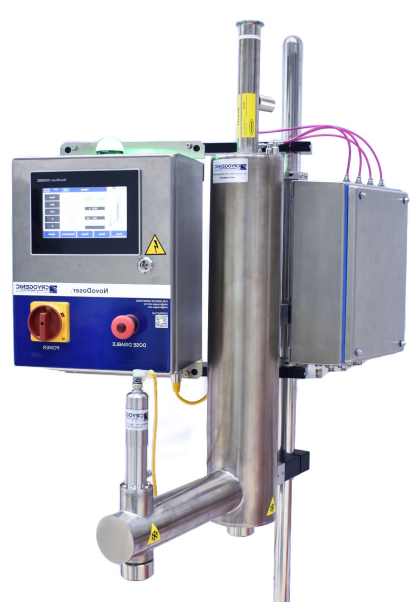Liquid nitrogen dosing is a highly effective method of improving the quality, shelf life, and production efficiency of food and beverage products.
A. Liquid nitrogen dosing is a process that involves the injection of small amounts of liquid nitrogen into a container or package just before it is sealed. This technique is widely used in the food and beverage industry for various purposes such as preservation, packaging, and quality control.

Here are some more details and examples of its use:
- Preservation and Shelf Life Extension:
Liquid nitrogen dosing can be used to extend the shelf life of food and beverage products by reducing the amount of oxygen in the package. This technique is particularly effective for products that are susceptible to spoilage or degradation caused by exposure to air or bacteria, such as fresh juices, sauces, and ready-to-eat meals.
For example, a company that produces fresh juices may use liquid nitrogen dosing to extend the shelf life of their products. By injecting liquid nitrogen into the packaging, the oxygen content is reduced, which slows down the growth of bacteria and microorganisms, preventing spoilage and extending the product’s shelf life.
2. Packaging and Sealing Efficiency:
Liquid nitrogen dosing can also be used to improve the efficiency of packaging and sealing processes. By injecting small amounts of liquid nitrogen into the package just before it is sealed, the gas displaces the oxygen inside, creating a modified atmosphere. This technique reduces the amount of headspace inside the package, which helps to prevent leaks and contamination.
For example, a company that produces dairy products such as yogurt may use liquid nitrogen dosing to improve their packaging and sealing processes. By injecting liquid nitrogen into the packaging, they can create a tighter seal, preventing leaks and spoilage, and improving product quality.

3. Unique Textures and Properties:
Liquid nitrogen dosing can be used to create unique textures and properties in food and beverage products. By rapidly cooling the product using liquid nitrogen, it is possible to create products with a smoother texture or a unique crunch, and to create frozen products that maintain their original texture when thawed.
For example, a company that produces ice cream may use liquid nitrogen dosing to create a smoother, creamier texture in their products. By rapidly cooling the ice cream mixture using liquid nitrogen, they can produce ice cream with a smaller ice crystal size, resulting in a smoother texture.
B. While liquid nitrogen dosing has many benefits, there are also some technical challenges associated with the process that need to be considered:
Safety Concerns:
One of the primary technical challenges of liquid nitrogen dosing is safety. Liquid nitrogen is extremely cold (-196°C), and can cause serious injury if it comes into contact with skin or eyes. Proper safety protocols, including the use of personal protective equipment, are essential to minimize the risk of injury to workers.
Equipment Requirements:
Another technical challenge of liquid nitrogen dosing is the equipment required to carry out the process. Specialized dosing equipment is needed to accurately and efficiently inject the liquid nitrogen into the container or package. This equipment can be costly, and requires proper maintenance to ensure accuracy and safety.
Consistency and Quality Control:
Achieving consistent results and maintaining quality control can also be a technical challenge with liquid nitrogen dosing. The amount of liquid nitrogen injected must be carefully controlled to avoid over or under-dosing, which can impact the quality and safety of the product. Additionally, proper training and quality control procedures are needed to ensure that the dosing process is carried out consistently and accurately.
Environmental Impact:
Finally, liquid nitrogen dosing can have an environmental impact, as the production of liquid nitrogen requires energy and resources. Proper disposal of excess liquid nitrogen and packaging materials is also necessary to minimize the environmental impact of the process.
Overall, while liquid nitrogen dosing has many benefits, it also requires careful consideration of safety, equipment, consistency and quality control, and environmental impact. Proper training and procedures can help to overcome these technical challenges and ensure that the dosing process is carried out safely and effectively.
C. With the KTW Novo Doser there is a new generation of LN2 Doser in the market, which provides the benefits and solve the technical challenges.

The Key Features of the system are:
- Frost-free nozzle
- Consistent container pressure
- Lowest LN2 consumption
- Lowest LN2 losses
- Minimized product splash
- Lowest system downtime
- Lowest maintenance
- Highest hygiene design
- Ease of installation
- Application flexibility
- Multi-lingual HMI
- 5 years vacuum warranty
Contact us under info@ktwtechnology.de to learn more regarding the new generation of liquid nitrogen dosing. Our check out our new landingpage: https://liquid-nitrogen-dosing.com/
